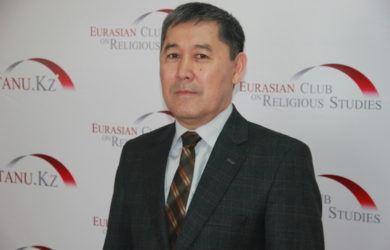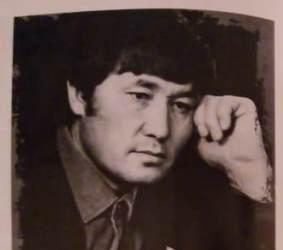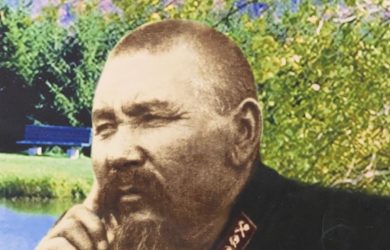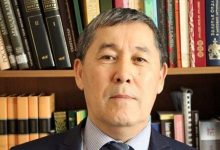EXCLUSION OF THE HOLY DYNASTY
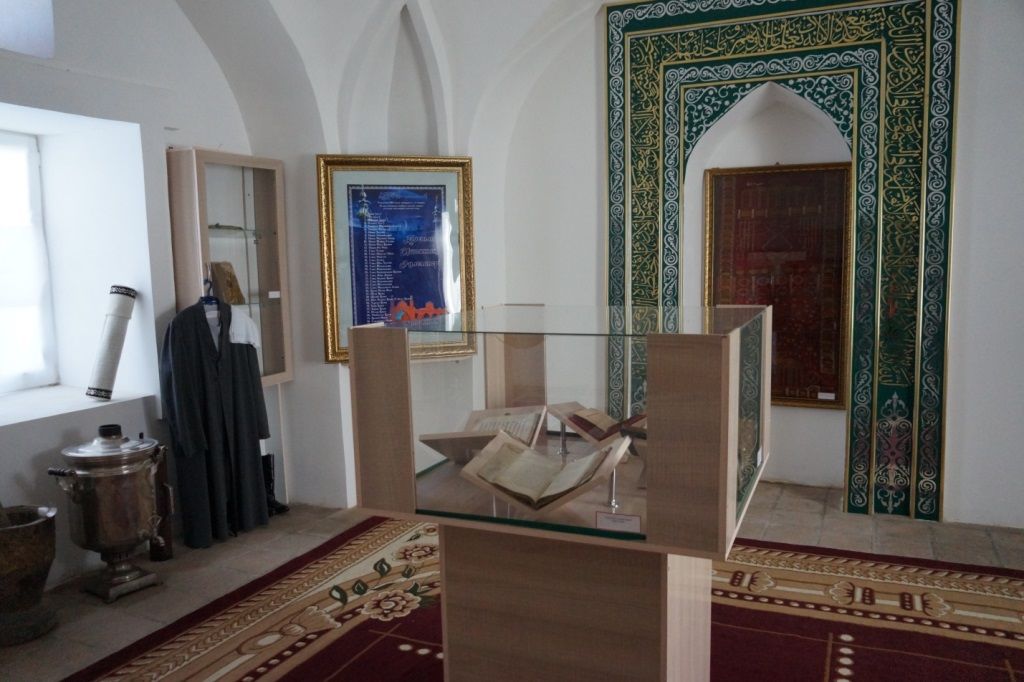
After the construction of the madrassah mosque in 1884 under the guidance of the younger brother Appak Ishan Madi had been completed, young people from all parts of Kazakhstan began to be accepted in the Shayan madrasah. An inspired guy who is a little over twenty years old continued to study after the construction of the madrassah. He received knowledge in Afghanistan, Turkey, Iran, Russia and in the Arab countries, in addition, he studied and maintained contact with madrassas in Tashkent, Samarkand, Bukhara and Ufa.Then they headed towards Zhezkazgan, Karaganda, Karsakpay, Akmola and Aktobe, Karkaraly and Semey. To attract and receive youth in madrassas, it was necessary to provide their food and other needs. Many gifted childrengraduated fromMadrasah. When activists, blindly following the orders of the authorities, began the persecution, the bright, Appak Ishan, possessing a penetrating mind, was content with this opportunity for his position not to give up of the way of Allah in this temporary world. When he finally understood what the authorities were aimed at, he became frightened. He sent all the ishanas around him to different regions to spread the truth to the people. At a time when people began to see each other as enemies, track and suspect each other, Appak Ishan remained an imam in the mosque for these forty years in white robes and a cane in his hand.Despite the fact that his age exceeded sixty years, his mind remained sharp and gait stayed alive, he always exuded light and wellness to people around. When «activists» came to eavesdrop and search for prohibited materials in the mosque-madrassah, he answered the «red collars» with tolerance and conducted restrained conversations. And in the last days of December 1929, according to decrees under the leadership of the newly appointed post in the district center – Boraldai Sadybaev Dildabek and two red officers sent a group of Khoji Mullah under the leadership of Appak Ishan to the city of Arys. On the way from Shayan, while escort of ishan mullahs approached late in the morning to the middle of the road near the Karaul ata hill, Dildabek went down on foot and gave his horse to Appak Ishan, then Ishan said:
“My son, your intentions are good, do not go out of the direct path
Supreme Lord
Keep the faith of Muslims, I read
May luck always be in your endeavors
And let evil pass over
May Allah accept our intention”
Appak Ishan uttered his word of blessing, wishing him a good journey, headed towards Tashkent on three riding horses. The mourners left them, then they moved along with the Khoja Mullahs. Less than a month later, in January 4, 1930, they were put on the wanted list in Central Asia and Kazakhstan by OGPU (United State Political Administration)members.
Top Secretly – January 4, 1930, the city of Tashkent. According to the OGPU of Central Asia – the city of Almaty, according to the OGPU of the Kazakh SSR –due to grain procurements a number of large Kazakh ishans fled to Uzbekistan from the Chayanovsky district of the Syr-Darya district. They were led by Appak-ishan (bright) Seidakhmetov, who had great authority among the Kazakh population of a number districts and previously had their own madrassas in Chayan-Mosque. These are following ishans:
- Seydahmetov Rahmetolla.
- Sagabullah and Alauaddin – Sons of Appak Ishan.
- Madiev (Seydahmetov) Bakibolla (son of Appak Ishan).
- Madiev Sagidulla.
- Askarov Mahmud.
- Seydakhmetov Sabyr.
- Tokhodzhaev Samen and others.
Seydakhmetov Sabyr (Appak Ishan’s younger brother): “I have eleven souls. All property and premises were completely confiscated. Meanwhile, despite the lack of funds, 500 pounds of grain tax were imposed. I paid 440 and got rid of debt. But there is a tax on flour and other taxes; I don’t know how I will pay them off. So what will I do if I don’t escape? I had to run away. »
After receiving these testimonies, the detained ishans, together with their children and relatives, were sent to the representative of the OGPU for Central Asia Suyenshaliev on April 30, 1930, and also on May 4 this year, explanatory Zhuravlev and Mikhailova repeat this fact.A more severe form of accusation expectedIshans – «Conducting propaganda against the Soviet government.»
In response to the objection to the accusation of his son Buckyboll, three witnesses from Appak Ishansaid: “These three ishans were engaged in the spread of unrest among the people, urging not to pay increased taxes, that hunger was coming soon, etc., – so they went against Soviet power. » Appak Ishan responded: “Let’s say this, but what about hunger? What do you say to this? ” It is true that in the summer of 1930, mass drought began due to drought and crop failure. At that time, the eldest of the Seydakhmetovs, Appak Ishan, was 66 years old, his son Bakibolla was 30 years old, his younger brother Sabir was 53 years old. The investigation and verification of the “criminal case” did not take much time, and on August 18, 1930 he was sentenced to three years of exile in Pavlodar, Bakibolla and Sabyr sent to a concentration camp.

A valuable exhibit – Zhainamaz, knitted to the end of the 18th century by Mother of Kosym Ishan, grandmother of Appak Ishan. The zhainamaz depicts the creation of space of the universe.
IDENTIFICATION OF RELIGIOUS SERVANTS AND REPRESENTATIVES OF THE KHOJA CLAN BY THE SOVIET AUTHORITY
“I was arrested because
I was ishan»
Appak Ishan
Appak Ishan was a special person, revered by the people. For the wellness of the country, it would be a mistake to neglect the leaders of the clergy who worked in the name of national integrity, separating from socio-historical truths, without taking into account their continuous laborious work and service to the people. In order to re-educate people’s minds in the direction of communist morality in Soviet times, the activities of Appak Ishan was the main obstacle to the “red” movement, and ishan was the main enemy of the Soviet government.
This is where the traditional Islamic (Sufism) religion, followed by the Kazakhs, is confronted with a new “Marxist” (Bolshevik) outlook on the historical arena. At that time, the influence and role of the Islamic religion was also strong within the country. The attitude of ordinary people to religion was completely different.In the end, a spiritually pure religion was bound in the human soul. Because at that time, some complex issues within the country were justly resolved by Shariat law and found their place in the era. For this reason, it would be obvious that the Soviet authorities would not be able to pursue their policies without removing these people. When they are destroyed, crowds of people will be left without leaders, and it will be easy to cope with them.That means, the saint people of that time could lead the people. The fact that during the period of the uprising from 1929 to 1930, the participation of 372 people, consisting of imams, ishans and mullahs, proves the above. Since, many rebellions in the mosque and the assembly led by imams and ishanas are available in the archive as evidence.In 1926, the religious freedom of the Soviet Union was abolished, and religion was strictly prohibited. At that time, the Khoja Mullahs were repressed. And because of this policy the descendants of Seydakhmet receive a great lesson, and were forced to move to Tashkent. Work in the mosque and madrassah in Shayan in these years was stopped.Appak Ishan, who was known as a scholar and Sufi, was arrested in 1930 in Chimkent (now the city of Shymkent). Due to the fact that he and his son Bakibolla (Appak Ishanov) Madiev and his brother Sabir Seydakhmetov were not able to pay taxes on grain, they were arrested by the Soviet government for anti-Soviet propaganda and taken into custody in case No. 2690.
Soviet authorities overcharged with excessive taxes on grain and meat in this area. At that time, the grain farms in the Shayan region were too small. It is well known that most underpayments of a poor person were forgiven. However, the Soviet authorities gave them the greatest tax burden. Among them were Appak Ishan’s father, his brothers and his children.
Thus, the policy of the Soviet government in relation to tax food was intolerable for representatives of religion. And how did they blame our father, Appak Ishan?Just because he can’t pay taxes?
Let’s look at the history of archives … In the last days of December 1929, the following was written in a letter to the Central Asian branch of the OGPU in Tashkent, signed by the leaders of the Eastern Department of the Syrdarya Regional Branch of the Central State Political Department:
“The Syrdarya region, which began with the harvesting of grain in the Shayan region of Uzbekistan, was a prominent figure among the Kazakh people, and a group of Kazakh idols fled from the madrassah to the Shayan mosque. Salikh Akhmetov Rakhmatulla – Appak Ishan’s brother, Saglabulla and Alaudin Appakov – Appak Ishan’s sons, Sapir Said-Akhmetov, Madiev (Appakishanov) Bakibolla, Madiev Sagidulla, Askarov Makhmut, Saten Tokkozhaev. All this was hidden in the middle of December this year by the residents of village No. 1 of the Shayansky district. According to our data, Appan Ishan Seydakhmetov lives in the village of Seksen-Ata in the Verkhne-Shyrshik district of the Tashkent region, others are still unknown. We ask you to immediately capture Appak Ishan Seydahmetov and his son Alauaddin Appakov, and control others”
“The Syrdarya region, which began with the harvesting of grain in the Shayan region of Uzbekistan, was a prominent area among the Kazakh people, and a group of Kazakh idols fled from the madrassah to the Shayan mosque. Salikh Akhmetov Rakhmatulla – Appak Ishan’s brother, Saglabulla and Alaudin Appakov – Appak Ishan’s sons, Sapir Said-Akhmetov, Madiev (Appakishanov) Bakibolla, Madiev Sagidulla, Askarov Makhmut, Saten Tokkozhaev.All of them were hidden in the middle of December this year by the residents of village No. 1 of the Shayansky district. According to our data, Appak Ishan Seydakhmetov lives in the village of Seksen-Ata in the Verkhne-Shyrshik district of the Tashkent region, others are still unknown. We ask you to immediately grab Appak Ishan Seydahmetov and his son Alauaddin Appakov, and control others”.
In addition, HansaidKhoja Sydyk- Ishan of Sairam region, who fled to Tashkent, was found and captured in November this year”. OGPU officers in Tashkent began their search, and in the last days of April 1930 they arrested Appak Seydakhmetov, Bakibolla Appakishanov (referred to as “Madiyev”) and Sabir Seydakhmetov, investigated in case No. 2690.On June 20 of the same year, according to an article of the Code of Criminal Procedure, article 143 of the Code of Criminal Procedure states that “on April 29 of this year, the OGPU (BMSB), the investigator’s report provided the following information. Seidakhmetov Appak-Maksum, Kazakh, 66 years old, has two wives, five children, he received education, received knowledge in his own village and was himself an imam until 1926. No voting rights. Here he had 2 houses, 3 camels, 4 bulls, 5 breeding cows, 9 horses, 40 sheep, 14 desserts and various household items. Not brought to court. During the Russian-Japanese War, he went on a pilgrimage and stayed there for 4 months. Before the revolution there were 60 sheep, 6 heads of cows, 10 horses, 3 camels and 5 bulls”.
For fifteen years, Alauaddin, Appak Ishan’s son studied at the famous madrasah of Muslim countries and received the post of Ishan. In 1905-1910 he studied at the Sule Kari Madrasah in Turkestan, Abylkasym Ishan in Tashkent, Sagidollah Kari in Bukhara and Kata Kurgan, where he learned the Koran by heart. However, Alauaddin was not limited to this knowledge. In the years 1910-1912 he studied at the Aitmuhamed Ishan Madrasah in Urgenish, Galia in Ufa, and Husain in Orenburg.
After the arrest, Appak Ishan asked the investigator a question: “My father was an ishan for 20-30 years. There were 600-800 murids (cohort, student). My father died 35 years ago. Before his death, he divided murids between his children, and I got 60 of murids. They live in the villages of Shayan, Sasyk, Bogen. My annual income is 300-400 rubles. But I declare that in these three years I have not seen murids. «
According to researcher Mambet Koigeldiev, this investigation is interpreted as follows: “… When we return to the investigation under a secret protocol, it is easy to find out how many students were there, based on the fact that the investigator knew that Appak Ishan kept the madrassah. The officials may have been threatened by a change in the movement against the Russians in the Caucasus during the transition of Imam Shamil to the Central Asian region in a new case … ” (M. Koigeldiev «Stalinism and repression in Kazakhstan: 1920-1940»).
Bakibolla, the eldest son of Appak Ishan, said in the investigation materials: “I am the son of Appak Ishan Bakibolla declare: people called my father “Ak Ishan”.
“My father and I could not pay taxes, so we were forced to leave the house against our will and we had to hide. I had a tax of 150 pounds of wheat, and my father had more than 1,400 pounds of tax on grain. Dad paid off, but I couldn’t pay. Thus, I had to hide”- he wrote. In addition, Buckyboll Ishan has not been able to pay taxes on grain since April 30, 1930.
“I, Appakishanov Bakibolla, 30 years old, grew up in the village of Shayansky district of Syrdarya region of Kazakhstan. My dad served as a clergyman, imam-ishan, before the February Revolution he had several murids, he is a Kazakh. The last four months he lived in the village of Ysty in Taitobe. I have a farm, as well as livestock. Married. My wife and children died two years ago. In 1918, I have been to Tashkent for 8 months. Now I live in my father’s house: there are 1 horse and 2 camels. Of the earmarked tax I can pay only 150 pounds … «
In this case, Sunnatullah and his brothers also lived in the old part of Tashkent after the escape, saying about them: “Rakhmatulla and Sabir Seydahmetov are my father’s relatives, Rakhmatulla is not involved in agriculture, she is a Sufi of a mosque. But Sabyr lives in the ‘Padakhan’ mahalla (county) in the old part of Tashkent, and I don’t know where the brother of Sunatullah lives. The reason we left the village is a grain tax, which we cannot repay-”he said.
From this statement it is clear that, Appak Ishan and his brothers and children had nothing to do with the Basmaches.
It was a heavy tax on grain put on the family, which forced his brothers and sons to leave their villages. At first glance, this is true. However, this was not the first time that Appak Ishan left his homeland and moved to another country. In his first reply to the investigator, the ishan said: “I was arrested because I was an ishan”,they make us understand what is the ultimate goal of the Soviet government. Indeed, the ultimate goal of the authorities was to infringe on the authority of religious leaders, thereby undermining the authority of Islam.
In his research work, scientist-researcher, writer Mambet Koigeldiev concluded: “Before achieving such a large-scale goal, an indispensable fact was that a large figure like Appak Ishan should have fallen in the eyes of society, and the authorities should have shown its power. Soviet power carved the future of the people, destroying religion, morality, customs and traditions” (M. Koigeldiev «Stalinism and repression in Kazakhstan: 1920-1940)»
Along with the documents in the archive, the children of a contemporary of Appak Ishan, the smallest, written by their grandchildren, who talked with them and talked about this terrible tragedy that happened in those days, it is impossible not to be sad to know what happened to the descendants of Appak Ishan.
Kuanalieva Laura-Lyailakhan Aytkozhakyzy
Member of the Union of Journalists of Kazakhstan.
